| |
Date |
Event(s) |
| 1 | 1787 | - 18 Nov 1787—10 Jul 1851: Louis Daguerre is born
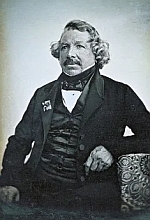
Louis-Jacques-Mandé Daguerre (18 November 1787 – 10 July 1851) was a French artist and photographer, recognized for his invention of the eponymous daguerreotype process of photography. He became known as one of the fathers of photography. Though he is most famous for his contributions to photography, he was also an accomplished painter, scenic designer, and a developer of the diorama theatre.
|
| 2 | 1818 | - 1818—20 Feb 1895: Frederick Douglass is born
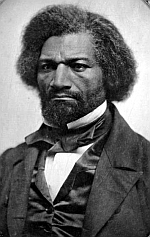
Born into slavery, he successfully escaped 3 Sep 1838. He was a Social reformer, author and orator. Leader in US abolitionist movement. Supported women’s rights movement. Became licensed preacher (1839). Publisher and editor, The North Star (1847-1851), later Frederick Douglass’ Paper (1851-1860). Publisher and editor, the New National Era (1870). Nominated for Vice-President by the Equal Rights Party (1872). Appointed President, Freedmen’s Savings Bank (1874). Served as US Ambassador to Haiti (1889-1891). Works include: Narrative of the Life of Frederick Douglass, an American Slave (1845); My Bondage and My Freedom (1855); and Life and Times of Frederick Douglass (1st ed., 1881, revised, 1892).
|
| 3 | 1829 | |
| 4 | 1835 | - 30 Nov 1835—21 Apr 1918: Mark Twain is born
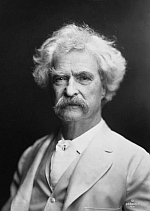
Samuel Langhorne Clemens (November 30, 1835 – April 21, 1910), known by his pen name Mark Twain, was an American writer, humorist, entrepreneur, publisher, and lecturer. He was praised as the "greatest humorist the United States has produced", and William Faulkner called him "the father of American literature". His novels include The Adventures of Tom Sawyer (1876) and its sequel, Adventures of Huckleberry Finn (1884), the latter of which has often been called the "Great American Novel".
|
| 5 | 1845 | - 1845—1855: The Great Famine (or the Irish Potato Famine)
The Great Famine, also known within Ireland as the Great Hunger or simply the Famine and outside Ireland as the Irish Potato Famine, was a period of starvation and disease in Ireland; with the most severely affected areas in the west and south of Ireland. The worst year of the period was 1847. Roughly 1 million people died and more than 1 million fled the country, causing the country's population to fall by 20–25% (in some towns falling as much as 67%) between 1841 and 1871. Between 1845 and 1855, at least 2.1 million people left Ireland, primarily on packet ships but also on steamboats and barques—one of the greatest exoduses from a single island in history.
|
| 6 | 1847 | - 11 Feb 1847—18 Oct 1931: Thomas Edison is born
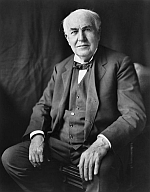
Thomas Alva Edison (February 11, 1847 – October 18, 1931) was an American inventor and businessman. He developed many devices in fields such as electric power generation, mass communication, sound recording, and motion pictures.[4] These inventions, which include the phonograph, the motion picture camera, and early versions of the electric light bulb, have had a widespread impact on the modern industrialized world.
- 3 Mar 1847—2 Aug 1922: Alexander Graham Bell is born
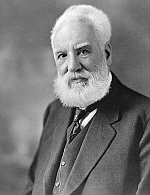
Alexander Graham Bell was a Scottish-born scientist, inventor, engineer, and innovator who is credited with inventing and patenting the first practical telephone. He also founded the American Telephone and Telegraph Company (AT&T) in 1885.
Bell's father, grandfather, and brother had all been associated with work on elocution and speech and both his mother and wife were deaf, profoundly influencing Bell's life's work. His research on hearing and speech further led him to experiment with hearing devices which eventually culminated in Bell being awarded the first U.S. patent for the telephone in 1876. Bell considered his invention an intrusion on his real work as a scientist and refused to have a telephone in his study.
|
| 7 | 1848 | - 1848—1855: California Gold Rush
The California Gold Rush (1848–1855) was a gold rush that began on January 24, 1848, when gold was found by James W. Marshall at Sutter's Mill in Coloma, California. The news of gold brought approximately 300,000 people to California from the rest of the United States and abroad.
|
| 8 | 1852 | - 1852—1860: Cholera pandemic
Generally considered the most deadly of the seven cholera pandemics, the third major outbreak of Cholera in the 19th century lasted from 1852 to 1860. Researchers at UCLA believe may have started as early as 1837 and lasted until 1863. Like the first and second pandemics, the Third Cholera Pandemic originated in India, spreading from the Ganges River Delta before tearing through Asia, Europe, North America and Africa and ending the lives of over a million people.
British physician John Snow, while working in a poor area of London, tracked cases of cholera and eventually succeeded in identifying contaminated water as the means of transmission for the disease.
|
| 9 | 1857 | |
| 10 | 1861 | - 1861: First true bicycle
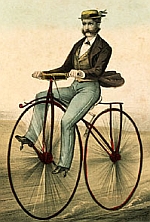
The first true bicycle is invented in France by Ernest Michaux and Pierre Lallement. The Velocipede, often known as the “boneshaker”, was the first bike with pedals (but no brakes!). It was called the “boneshaker” because of its stiff iron frame. This made to a rough and bumpy ride.
- 4 Mar 1861—15 Apr 1865: President Abraham Lincoln
16th President of the United States. Born Feb. 12, 1809. Assassinated Apr 15, 1865 at the age of 56.
- 12 Apr 1861—26 May 1865: American Civil War
The American Civil War was a civil war in the United States. It was fought between the Union ("the North") and the Confederacy ("the South"), the latter formed by states that had seceded. The central cause of the war was the dispute over whether slavery would be permitted to expand into the western territories, leading to more slave states, or be prevented from doing so, which was widely believed would place slavery on a course of ultimate extinction.
|
| 11 | 1865 | |
| 12 | 1867 | - 7 Nov 1867: Marie Curie is born
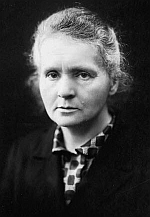
Marie Skłodowska Curie; born Maria Salomea Skłodowska 7 November 1867 – 4 July 1934) was a Polish and naturalized-French physicist and chemist who conducted pioneering research on radioactivity. She was the first woman to win a Nobel Prize, the first person and only woman to win twice, and the only person to win a Nobel Prize in two different sciences. She was part of the Curie family legacy of five Nobel Prizes. She was also the first woman to become a professor at the University of Paris, and in 1995 became the first woman to be entombed on her own merits in the Panthéon in Paris.
She was born in Warsaw, in what was then the Kingdom of Poland, part of the Russian Empire. She studied at Warsaw's clandestine Flying University and began her practical scientific training in Warsaw. In 1891, aged 24, she followed her older sister Bronisława to study in Paris, where she earned her higher degrees and conducted her subsequent scientific work. She shared the 1903 Nobel Prize in Physics with her husband Pierre Curie and physicist Henri Becquerel. She won the 1911 Nobel Prize in Chemistry.
|
| 13 | 1869 | - 1869: Transcontinental Railroad Completed
By connecting the existing eastern U.S. rail networks to the west coast, the Transcontinental Railroad (known originally as the "Pacific Railroad") became the first continuous railroad line across the United States. It was constructed between 1863 and 1869.
- 4 Mar 1869—5 Mar 1877: President Ulysses S. Grant
18th President of the United States. Born Apr. 27, 1822. Died Jul. 23, 1885 at the age of 63.
|
| 14 | 1879 | - 14 Mar 1879: Albert Einstein is born
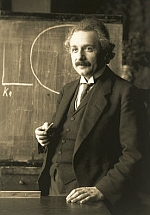
Albert Einstein was a German-born theoretical physicist, widely acknowledged to be one of the greatest and most influential physicists of all time. Einstein is best known for developing the Theory of Relativity, but he also made important contributions to the development of the theory of quantum mechanics. Relativity and quantum mechanics are the two pillars of modern physics.
|
| 15 | 1882 | - 1882: The first incandescent light bulb.
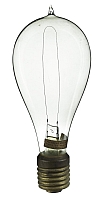
In 1880 Edison invented the first incandescent light bulb that was practical, one that would stay lit for for hours and hours. Two years later in 1882, Thomas Edison helped form the company that brought electric light to parts of Manhattan. But progress was slow. Most Americans still lit their homes with gas light and candles for another 50 years. Only in 1925 did half of all homes in the US have electric power. By the 1930s, nearly 90 percent of urban households had electricity but only 10 percent of rural households had access.
|
| 16 | 1885 | |
| 17 | 1892 | - 1 Jan 1892: Ellis Island Opens
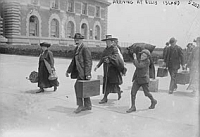
Ellis Island, in Upper New York Bay, was the gateway for over 12 million immigrants to the U.S. as the United States' busiest immigrant inspection station for over 60 years from 1892 until 1954. Ellis Island was opened January 1, 1892. The island was greatly expanded with land reclamation between 1892 and 1934. Before that, the much smaller original island was the site of Fort Gibson and later a naval magazine.
The island was made part of the Statue of Liberty National Monument in 1965 and has hosted a museum of immigration since 1990. "As a visitor to this place, you stand in awe. It has the aura of an ancient cathedral, redolent with the millions who passed through these doors."
|
| 18 | 1898 | - 21 Apr 1898—13 Aug 1898: Spanish-American War
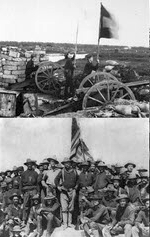
The Spanish–American War was fought between the United States and Spain in 1898. Hostilities began in the aftermath of the internal explosion of USS Maine in Havana Harbor in Cuba, leading to U.S. intervention in the Cuban War of Independence. U.S. acquisition of Spain's Pacific possessions led to its involvement in the Philippine Revolution and ultimately in the Philippine–American War.
The result was the 1898 Treaty of Paris, negotiated on terms favorable to the U.S. which allowed it temporary control of Cuba and ceded ownership of Puerto Rico, Guam, and the Philippine islands. The cession of the Philippines involved payment of $20 million ($602,320,000 today) to Spain by the U.S. to cover infrastructure owned by Spain.
|
